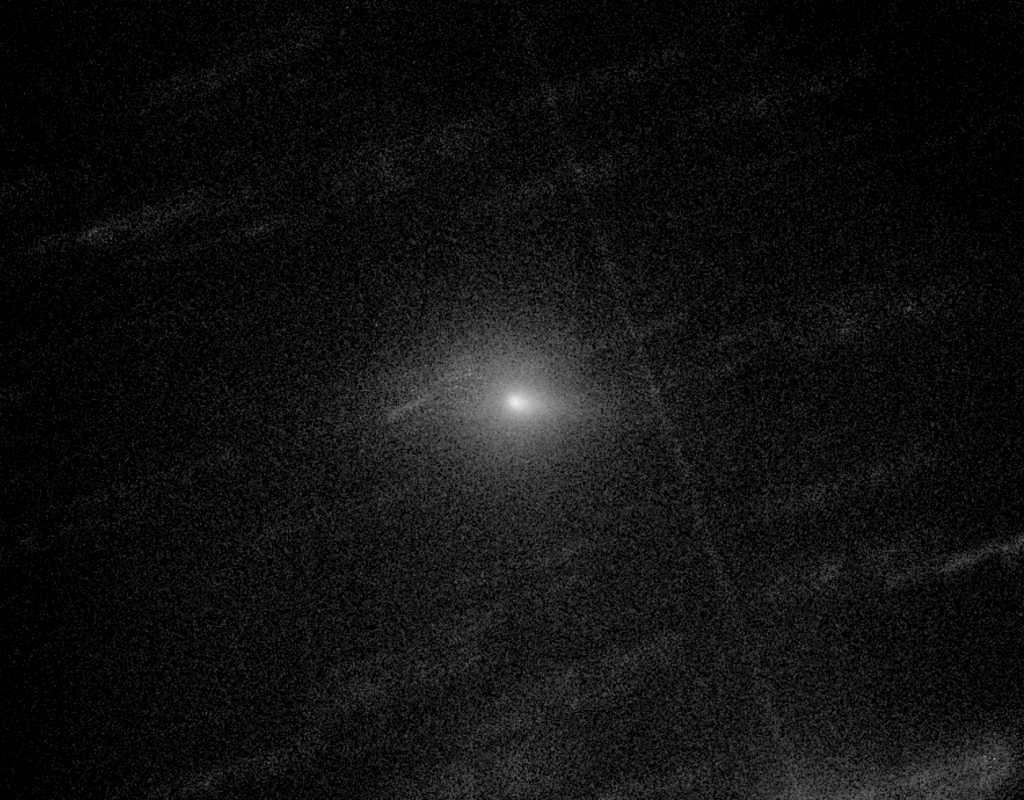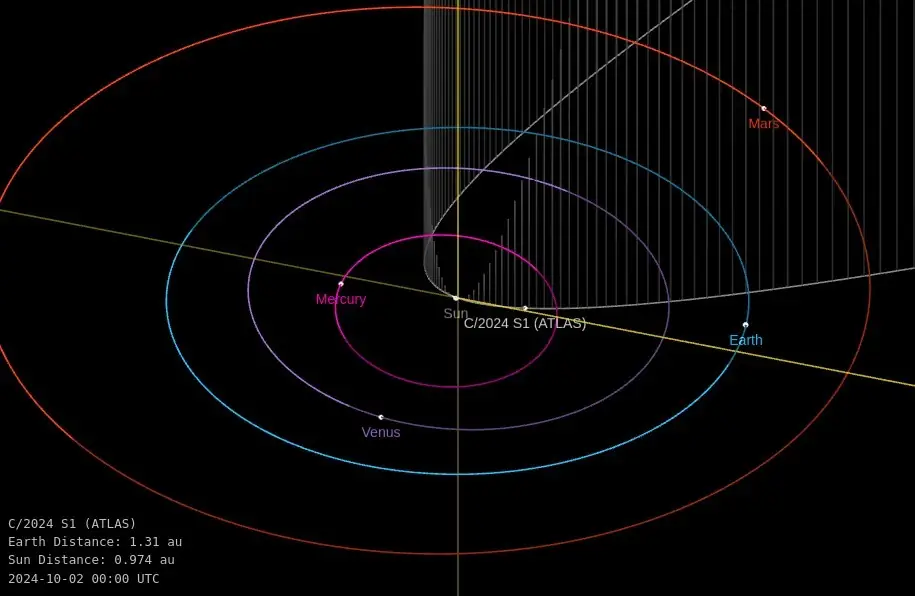The Center for Minor Planets published an electronic circular, which contains the orbital elements of the recently discovered near-solar comet. Also, the tail guest received the official designation — C/2024 S1 (ATLAS).

C/2024 S1 (ATLAS) was discovered on September 27 by telescopes of the automated system ATLAS. The discovery immediately attracted the attention of astronomers. The fact is that the orbital characteristics of C/2024 S1 (ATLAS) resembled the parameters of comets from the Kreutz family. This is the name given to a group of near-solar comets that follow similar orbits. They are all believed to be fragments of one very large comet that probably collapsed in 1106 AD.
The vast majority of comets in the Kreutz family are quite small and burn up completely during their encounter with the Sun. They are usually found a day to two days before perihelion passage in SOHO observatory images. The fact that C/2024 S1 (ATLAS) was found a month before perihelion suggests that this is an exceptional object. The last time a similar event occurred was in 2011 with comet C/2011 W3 (Lovejoy).
Will comet C/2024 S1 (ATLAS) survive?
Astronomers’ calculations say that C/2024 S1 (ATLAS) will pass the perihelion of its orbit on October 28. The comet will pass at a distance of half a million kilometers from the Sun. Different sources provide different estimates of its potential brightness. In theory, the brilliance of C/2024 S1 (ATLAS) may even exceed that of Venus. In this case, at the moment of perihelion passage, it may even be visible in the daytime sky.

However, so far, all this is purely hypothetical speculation. The comets of the Kreutz family are rather fragile, and their behavior is extremely difficult to predict. C/2024 S1 (ATLAS) may break apart before or just after passing perihelion, as happened with the Lovejoy comet. Everything depends on the size and strength of its core.
As for visibility, residents of the Southern Hemisphere are in the best position. C/2024 S1 (ATLAS) will be visible in the sky until it passes perihelion. At the moment of perihelion passage, the comet will reach its maximum brightness (if it doesn’t break apart), and it may be observable in the Northern Hemisphere right before the Sun rises low above the horizon. If the comet survives, it may be seen in the morning sky later. However, we shouldn’t forget that comets of the Kreutz family lose brightness as quickly as they gain it.
In any case, even if the comet breaks apart, this event will be recorded by various solar observatories, which will show the process in great detail.


